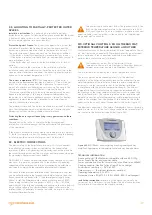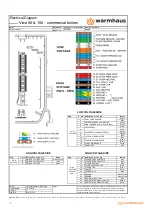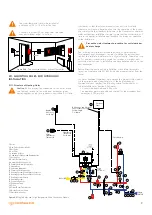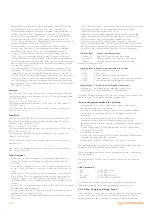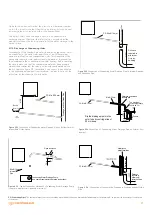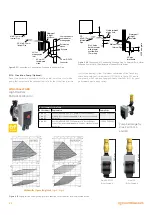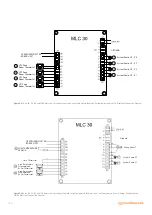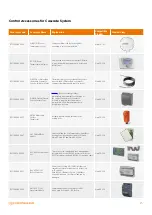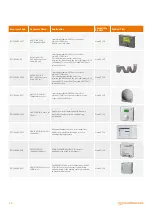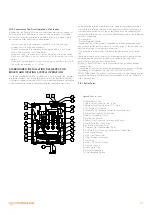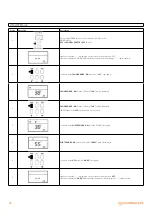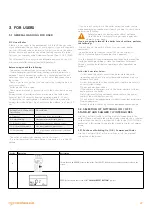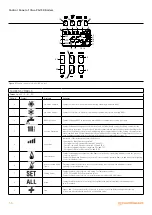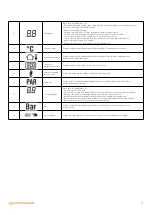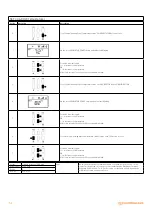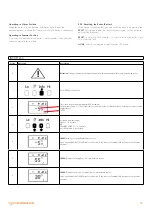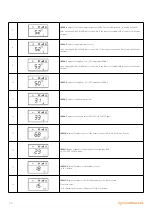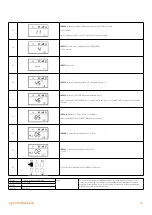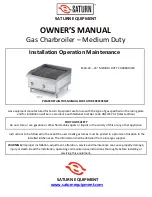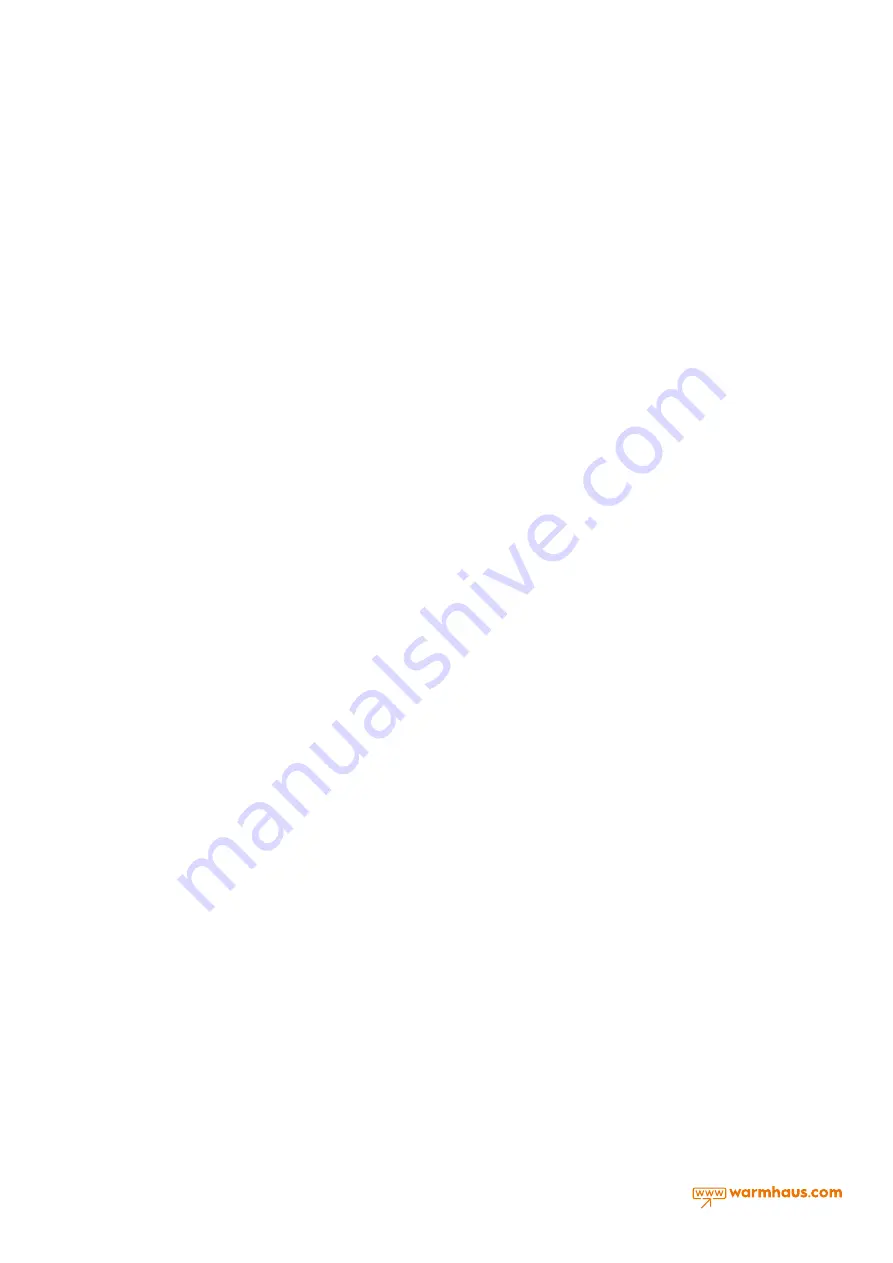
20
• The maximum permissible sulphate and nitrate content to limit the
microbiologically affected corrosion (MIC) risk is 100 mg/litre.
• Strong oxidizing chemicals should be avoided. Some examples of
oxidizers include, but are not limited to: chlorine (C
12
), hydrogen
peroxide (H
2
O
2
), bromine (Br2), ozone (O
3
), chlorine dioxide (CIO
2
),
sodium hypochlorite (NaClO), potassium hypochlorite lime (Ca
(CIO)
2
). Strong oxidizers are often added as biocides to the water to
reduce microbiological activity of the water.
• Strong complex actuators should be avoided. The most likely
to occur are: chlorides (CI-), ammonia and ammonia containing
chemicals (NH3, amines, EDTA, etc.), polyphosphates (such as
Calgon). Strong complex actuators are also known as “chelates”
(EDTA, NTA), are commonly used to control scaling by typically
forming fixed heat-soluble complexes with calcium and magnesium.
• The installation should be designed so that all air can be discharged,
ensure that all air is discharged after installation. Preferably, you can
also install air separators.
• The total volume VT of water filled, refilled and completely filled
throughout the lifetime of boiler at a total hardness of 11°d or 11°dH
(~2mmol/litre) shall not exceed the following values: 15 litres/kW x
[kW] for Viwa 90-150 series, Taking into consideration that the water
in the installation is likely to be completely filled up several times
over the lifetime of the heat exchanger, the maximum values in the
application must not exceed the following values: 7.5 litre/kW x [kW]
for Viwa 90-150 series.
Example:
Viwa 90 boiler 90 kW, the total volume of the installation is 1100 litres.
The maximum permissible hardness for Viwa 90 can be obtained from
7.5 litres/kW at 11°d.
This is 7.5 x 90 x 11 = 7425 litres. °d
The maximum permissible hardness at 1100 litres, the total volume, is
7425/1100 = 6.8°d.
This means that the water in the installation must be softened to a
value of 6.8ºd or less.
Example 2:
Viwa 150 boiler 150 kW, the total volume of the installation is 5,000
litres. The maximum permissible hardness for the Viwa 150 can be
obtained from 7,5 litres/kW at 11°d.
This is 7.5 x 150 x 11 = 12,375 litres.
The maximum permissible hardness for a total volume of 5,000 litres is
12,375 / 5000 = 2,48 ° d.
This means that the water in the installation must be softened to a
value of 2.48ºd or less.
The following table shows the other examples of maximum water
hardness in °d.
In all cases, the maximum hardness of the water in the installation
must be less than 25°d.
Water treatment
• In the case of water softening by ion exchange, the mixed ion
exchange is preferred. Additional pH buffering should then be
provided.
• Avoid cation exchange with K+ or Na+. If cation exchange with K+
or Na+ is used, pH control is required to limit the pH variation over
time.
• In the case of water softening by anion exchange, only methods
using sulphur (SO42-) as negative ion are allowed. Ion exchange
methods using Cl- or CO32- negative ions are not allowed. If
demineralization is used, a chemical additive will be added for pH
control.
• Never fill the system with distilled water, as this will seriously corrode
the aluminium heat exchanger.
• In order to limit the risk of corrosion, the water conductivity should
preferably be less than 100 μS/cm.
• The conductivity of untreated installation water should not exceed
600 μS/cm.
• If the installation water is treated with one of the products described
below and according to the manufacturer's instructions, the
conductivity must not exceed 1500 μS/cm.
• If the conductivity is higher than the specified values, empty the
system and clean and fill with clean tap water according to EN
14336, preferably with recommended cleaning products.
• There are many products in the market claiming to clean and
protect the heating systems. Unfortunately, there are a few products
that have actually proved this in practice. For this reason, Warmhaus
only allows the following quality products for water treatment;
Manufacturer : Fernox (www.fernox.com)
- Cleaner F3
: Removes corrosion, lime and sludge
- Protector F1 : Protects against corrosion, lime and sludge
- Alphi-11
: Prevents freezing and provides protection
against corrosion and lime
Manufacturer : Sentinel (www.sentinelprotects.com)
- X 100
: General inhibitor protection
- X 200
: Noise reduct
- X 300
: System cleaner for new installations
- X 400
: System renewing sludge cleaning for old installations
- X 500
: Protective antifreeze and general protection
Manufacturer : Clariant (www.antifrogen.clariant.com)
Antifrogen-L : antifreeze (mono ethylene glycol) (Note:
Antifrogen-N is toxic, Antifrogen-L is recommended)
Note that all these products must be used strictly in accordance with
the instructions of the water treatment manufacturers.
We also strongly recommend the following:
• Use a register to fill, refill, completely fill water, water quality
measurements and water treatment.
• Use only non-diffusing material, especially for underfloor heating.
• Always install air discharge devices at the highest point in the
installation.
• In order to avoid as much as possible of filling, refilling and
completely filling, place ball valves near the boiler on the
installation and in strategic locations (anticipating future expansion of
the system).
• Install a water meter to check the amount of filled, refilled, and
completely refilled water.
• Install a filter in return.
• In case of any doubt, install a plate heat exchanger to hydraulically
separate the boiler from the installation.
• Prevent leaks; If there is a leak, repair it as soon as possible.
We recommend that you add this description of the preventive water
treatment to your installation and operating manual.
The above-mentioned water quality requirements apply to aluminium
heat exchangers.
The requirements of other parts in the installation are not taken into
account.
ABD Conversion::
1 litre
= 0,264 USA gallon
1 °dH
= 0,959 gpg
1 kW (NCV)
= 3,792 MBTU/s (GCV)
1 litre/kW
= 0,0697 USA gallon/BTU/s
All information contained in the above descriptions is based on
reasonable research, but does not guarantee any end result.
2.11.2. Filling / Emptying Heating System
After installation of the boiler, a supply connection from the network
line must be made with a ball valve with the purpose of filling in
heating installation line to fill the closed-circuit heating installation.












